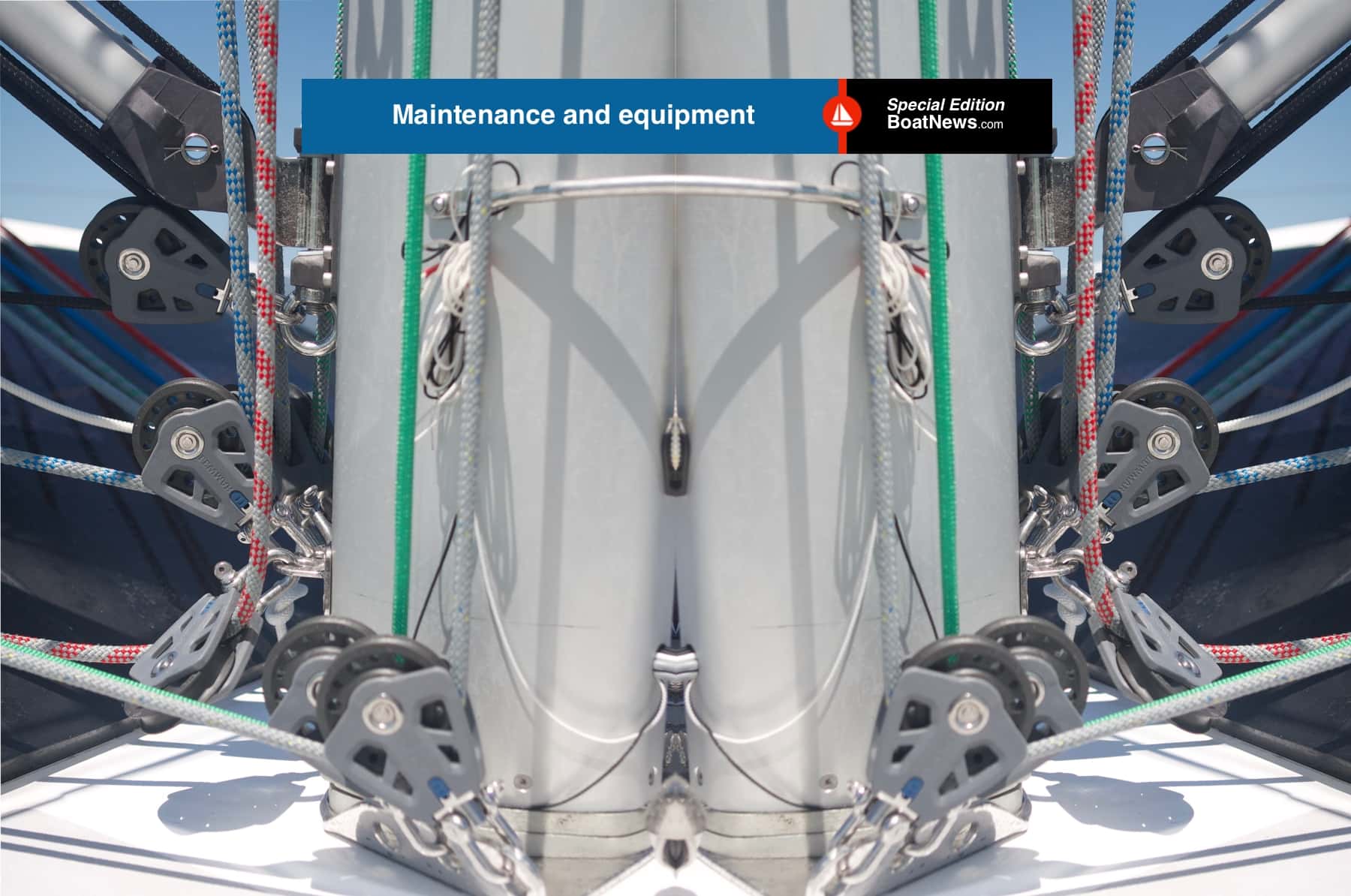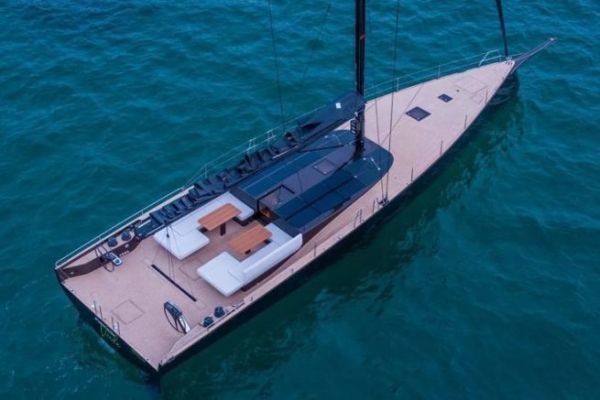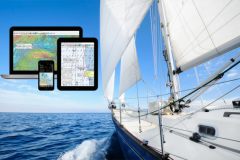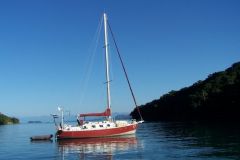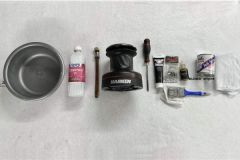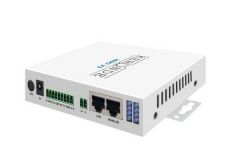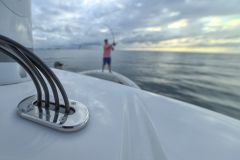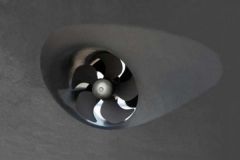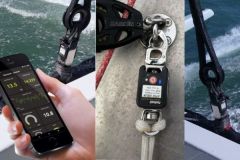If you own a boat and you want to obtain electrical autonomy, solar panels are THE solution. Whether at sea, on the quay or at anchor, as long as you avoid large consumers such as air conditioning or heating, you will not be able to do without them. However, how to choose the right solar panel for your needs?
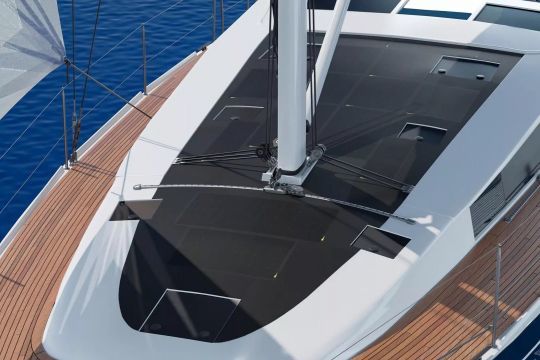
Here are the simple steps to follow to help choose the right solar panel for your needs.
1 - Take inventory of consumers
First, it is important to take an inventory of your consumption in watts (W) of all your electrical appliances on board. If you cannot find the wattage consumption, you can calculate it by multiplying the current in amperes (A) by the voltage in volts (V) to obtain it. This will give the power in watts (W). According to the formula: P = U x I or Power = voltage x amperage.
2 - Calculate the daily consumption of each consumer
Estimate the daily consumption of each appliance by multiplying the power of the appliance by the daily usage time in hours to obtain a value in watt-hours (Wh).
3 - Estimate your daily consumption
Add up the watt-hour consumption for all your appliances to get your daily electricity requirement.
4 - Integrate additional load resources
Don't forget to subtract any other generation sources such as wind, generator or engine alternator.
5 - Validate the necessary power in solar panels
It is now time to estimate the power needed from your solar panels. A solar panel can produce between 2 and 5 times its power per day depending on the season. Considering a non-optimal layout on a boat, it is advisable to take the minimum production, that is to say two times its maximum power. For example, if your daily need is 100 Wh per day, we recommend a 50 Wp panel.
6 - Check the capacity of your batteries
To validate the capacity of its battery park, you must take into account the fact that a traditional lead-acid battery cannot be discharged to more than 50%. You will therefore need at least double the capacity to have a day's autonomy. With Lithium batteries, we keep a margin of 20%, so 120% of the power requirement will be the minimum.
In general, it is recommended to start on at least 4 times its daily need with lead batteries and 2.5 times for Lithium batteries, to be able to keep in reserve the energy of a sunny day for a day with lower production.
Please note that the capacity of batteries is often indicated in AH and not in watt. To convert, simply multiply the AH by the voltage of the batteries to get the watt-hours. For example, if you have a daily need of 300 Wh, the capacity of your lead-acid battery must be 1200 Wh, or 100 AH for a 12 V battery, or 750 Wh and 62.5 AH for a Lithium battery.

7 - Choice of the solar panel model
There are many solutions for solar panels. Here is an overview of the different types of solar panels and their characteristics:
- Rigid panels on permanent support
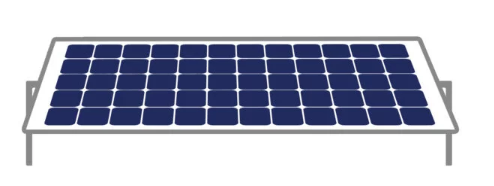
This option is recommended if you can install a stand, as well ventilated cells have better production and the risk of shading is minimized. You can also tilt them for optimal production. - Rigid panels on removable support
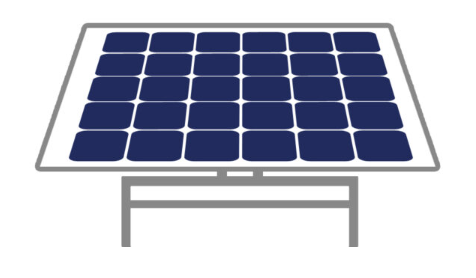
This is an effective alternative, but not very practical and rarely used in navigation. - Flexible panels to be glued flat
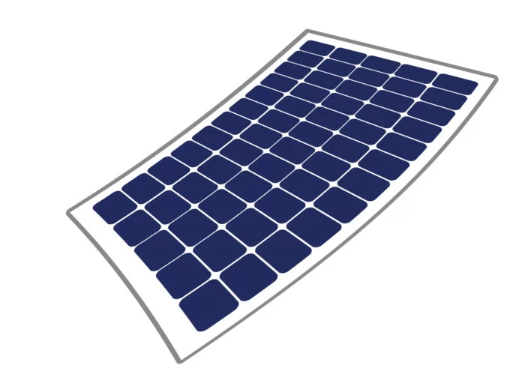
If you don't have a place to install rigid panels, you can stick them on the deck or roof in low-traffic areas. The production of these models is satisfactory and some are even coated with anti-slip resistant to trampling. - Flexible panels for bimini or awning
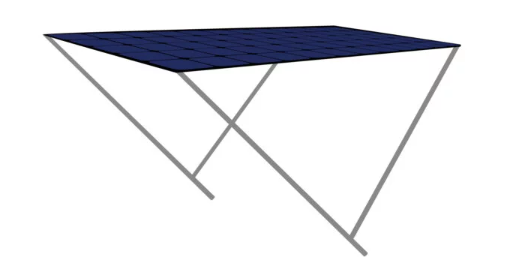
Flexible, lightweight panels can be installed on the bimini, with quick connectors for quick and easy removal during winterization or when sailing in strong winds. - Foldable solar panels
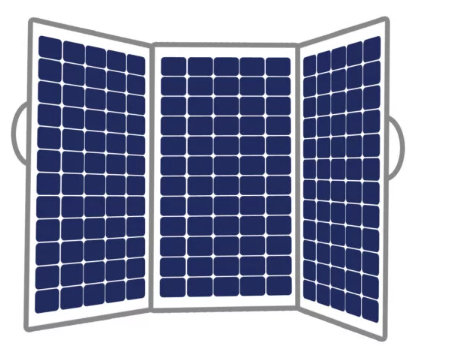
These panels have the same production as the flexible panels, but have the advantage of being able to be placed according to the sun, to fold and to be stored easily when you leave your mooring or your place of port. - Customized flexible solar panels
They allow to optimize the available space on the deck or deckhouse, exposing the maximum number of photovoltaic cells.
Ready-to-install kits
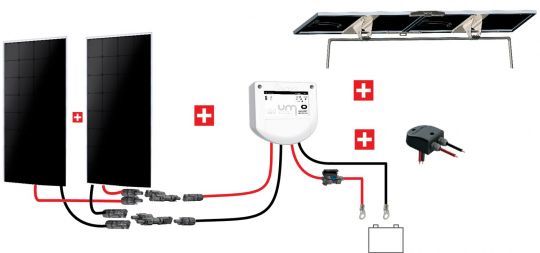
To help the yachtsman and avoid him to make soldering or electrical connections, e-Nav Systems offers complete kits. These kits include the solar panels, the gantry, the cabling and their plugs, the regulator and even the hull pass-through for the cables. Of course each element, even the diameter of the cables, is sized according to the power of the panels. These kits are available from 50 to 300 W.
